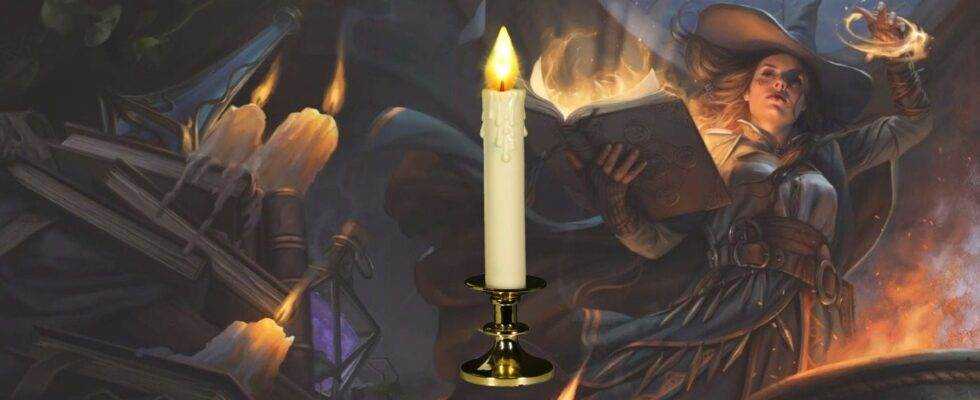The main reason why the Candle Caster prestige class in Dungeons & Dragons was so bad was that it couldn’t operate in areas with a strong breeze.
One of the worst classes in the history of Dungeons & Dragons was the Candle Caster, which was a prestige class for Wizards that could be undone by a windy day. Magical candles do exist in the world of D&D, but they’re mostly used for rituals instead of being lit in the heat of battle.
Some of the most common and useful magic items in D&D are spell scrolls. These are single-use items that contain a spell. The reason spell scrolls are so useful is that they can help give some extra utility to spellcasters, who often quickly run out of slots while in the field. The ability to scribe scrolls means that it’s possible to carry around spells which aren’t used very often, which is handy because it means that they’re not taking up any memorized slots. Potions are generally more useful than scrolls (as they can be used by anyone) but few spellcasters will ever turn down a nice piece of magical vellum.
Click the button below to start this article in quick view.
In the current edition of D&D, a player chooses a subclass for their character at some point between levels 1-3. In 3rd edition, characters could take on advanced Prestige Classes at later levels, assuming they met the prerequisites. Some of the earliest sourcebooks for Dungeons & Dragons 3rd edition had some unbalanced classes, like the Warmaster and its free castles, and they were abandoned in the jump to 3.5. One class that was left in 3rd edition was the Candle Caster from Tome and Blood, due to its ridiculous gimmick that was easily undone.
Dungeons & Dragons: A Candle & The Wind
The gimmick of the Candle Caster class in D&D was that it could enchant candles in the same way that other spellcasters could enchant scrolls. The benefit of this method of enchantment is that Candle Casters would also place the effects of Metamagic Feats into the spells. The only problem was the number of drawbacks around using Dungeons & Dragons’ candles as magic items.
The first issue is lighting it, which requires access to a tindertwig. These cost a gold piece each and could be hard to come by, as they’re classified as specialty goods in Dungeons & Dragons. It was possible to light a candle using other methods in D&D 3rd edition, but this took a full-round action. The candle also needs to be lit in the correct conditions, as rain or wind would prevent the item from being activated.
The other major drawback to the candle method is that the spell doesn’t activate until the start of the next round, whereas scrolls will activate straight away. Candle Casters can eventually gain the power to make candles work instantly, but it’s their seventh-level ability. A character cannot take levels in the Candle Caster class until they have five other levels in a spellcasting class, so they won’t reach this ability until they hit level eleven. The idea is that D&D’s Candle Caster can perform an action during the round that the candle activates, but its power can be suppressed by dispel magic or an antimagic field, ruining the effect. It’s also possible that the tactical situation will have changed to make the spell useless.
Let’s say the Candle Caster lights a magic missile candle and aims it at an enemy. If an ally kills that enemy before the start of the Candle Caster’s next turn, then their spell is wasted. There are so many caveats to the Candle Caster’s abilities that they are outclassed by pretty much every other Wizard Prestige Class, and it’s no surprise that they were abandoned after the 3rd edition of Dungeons & Dragons.
Source: Tome and Blood
About The Author
